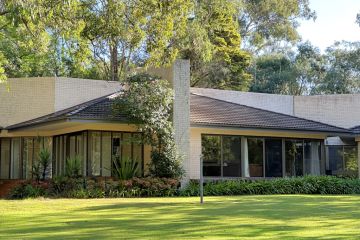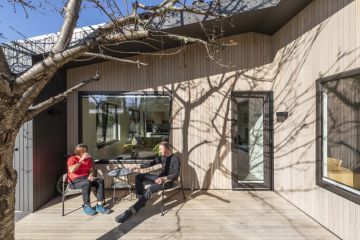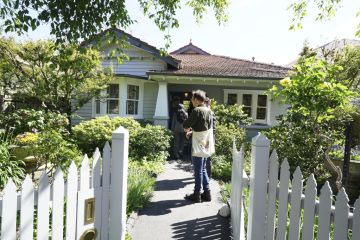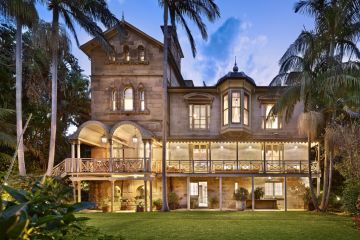Minimising your property investment risk

Diversify and conquer
Investing in a mix of asset classes is the best way to spread your general investment risk – many people invest across property, cash, shares and bonds. Applying this diversified approach to your property investment portfolio is also a good idea. Though the property market follows an overall cycle (traditionally viewed as a seven- to 10-year period), individual regions, even suburbs, will also experience their own value-growth cycles.
You can apply the logic of diversification within your property portfolio, to the type of properties you invest in and the way you finance your equity.
Region
Dr Andrew Wilson, senior economist for the Domain Group, suggests looking to Australia’s capital cities and advises against seeking out real estate hotspots.
“Although regional markets can be okay, I think capital city markets, particularly the bigger capital city markets, are more resilient and robust through the cycles because their underlying drivers are so significant,” says Dr Wilson. “So even though you can get moderating price outcomes in the short term, over the long term the capital cities do produce consistent growth.”
The Real Estate Institute of Australia’s CEO, Amanda Lynch, concurs that investing in capital cities can offer some consistency. “Between the June quarter 1999 and the June quarter 2014, the weighted average median house price in all eight capital cities tripled from $205,800 to $617,200; however, different markets saw different rates of increase. Prospective investors should always research the areas they are potentially buying into.”
Taking the time to research the area you are planning to invest in is essential. Domain, in conjunction with Australian Property Monitors, provides detailed suburb guides that supply information on home sales, sale prices, clearance rates, occupancy rates and population demographics.
Lynch recommends asking a number of questions when reviewing which suburbs to invest in.
- Does demand, for whatever reason, exceed or apparently exceed supply?
- Is the increase in the area’s price range significantly greater than in the region as a whole?
- Does the area have low prices that are expected to rise in the near future?
- Are neighbouring areas experiencing good capital growth?
- Are there positive developments happening in the area (like a new railway or arterial road to the city) that will impact positively on capital gains?
While there is no ‘crystal ball’ when it comes to choosing your real estate investment location, Lynch says it is worth keeping an eye out for key gentrification indicators within a suburb, such as “a newly established café strip, a newly created dog park or new public transport routes”.
Real estate investment across different capital cities can provide more benefits than just spreading your property investment risk. Consider, for example, the dramatic difference in stamp duty charges between the states and territories. You can save as much as $20,000 just by crossing a border with your investment. Utility, tax and ongoing maintenance costs also vary considerably from state to state, as do rental income rates, so it is important to calculate your expected net rental yield.
Property type
Rental property
When buying a property you intend to lease, you need to evaluate the potential rental yield – that is, the annual gross rental income as a percentage of the overall property value. You should also review the net rental yield, which offsets the investment property’s potential rental income against ongoing gearing and running costs.
With this in mind, investors often look to apartments for sale as they require less upkeep and attract lower utility and land tax fees than freestanding houses. On the other hand, apartments attract strata or body corporate fees, and owners are required to attend management meetings. Investing in a house and its surrounding land may provide greater capital growth as land prices have been on the rise in Australia’s capital cities. A house may also attract families, who are less inclined to move and are seeking longer-term leases.
Diversifying between apartments and houses for sale is one option within an investment portfolio, as is diversifying between new-build and older-style properties. The modern convenience of a new property can be attractive to renters – as is the need for less upkeep and repair by the investor – but older-style homes often feature valuable architectural details and high-quality workmanship. Investing in an older-style property for sale can also provide access to established, blue-chip suburbs.
Renovate and sell
Purchasing a property so you can ‘flip’ it after undertaking a renovation can pay dividends, but you need to be wary of overcapitalising. Obtaining the real estate at a great price, having the time and knowledge to renovate and sticking to a budget are all key factors. Dr Wilson also acknowledges that as land values are so high these days, making changes to a property’s structure may not impact greatly on the overall capital gain.
“It is very hard to improve your capital outcome based on a new structure or a better structure, because the land value is now so significant. In Sydney there are over 170 suburbs with a median house price above a million dollars and of course the standard home you could probably still build for two or three hundred thousand dollars.”
Off the plan
Seeking good legal advice when reviewing contracts will avoid problems if the development falls through or there are building defects. The upside is that you can secure a property for sale at today’s market price with just a deposit. When it comes time to pay the remaining money owed at settlement (usually when the construction is completed), the market value has often increased.
Guaranteed rental schemes
Property investments offering guaranteed rental returns and all-inclusive property management services can provide greater security for investors. Defence Housing Australia is a popular government-run investor program. However, it is important to consider your potential net rental yield, as these programs garner higher management fees. Rental income aside, you should evaluate these investment properties as you would any other real estate investment, as this will determine whether you are likely to make a capital gain over the long term.
Non-residential
Investing in commercial real estate is not as common as the residential market and we recommend seeking financial or property management advice if you are interested in non-residential investments. Managed funds can incorporate commercial real estate investments, much like property trusts, property syndicates and property security funds.
Insurance
Landlord insurance and mortgage protection insurance are two products that will help reduce your property investment risk over the long term.
Landlord insurance covers your investment property’s building and permanent internal structures, and provides protection against a tenant defaulting on their rental payments or damaging the property. Insurance companies structure their policies differently, and while some are all-inclusive, others separate the tenancy protection as an optional extra. It is wise to check the insurer’s policy definitions, particularly when it comes to ‘internal structures and permanent fixtures’ and fine print around water damage. It’s important pay close attention to the details – a technicality could render your coverage inapplicable.
If life takes an unexpected turn and you are unable to earn an income – such as in the event of illness, unemployment or injury – mortgage protection insurance ensures you are still able to make your mortgage repayments.
We recommend
We thought you might like
States
Capital Cities
Capital Cities - Rentals
Popular Areas
Allhomes
More







